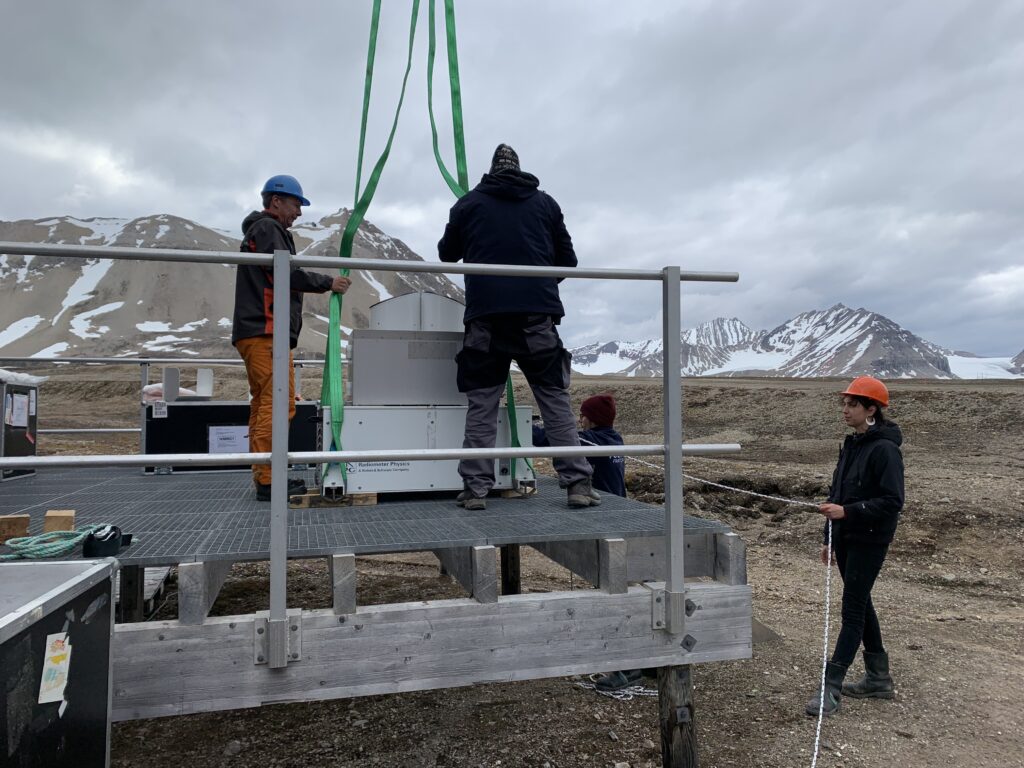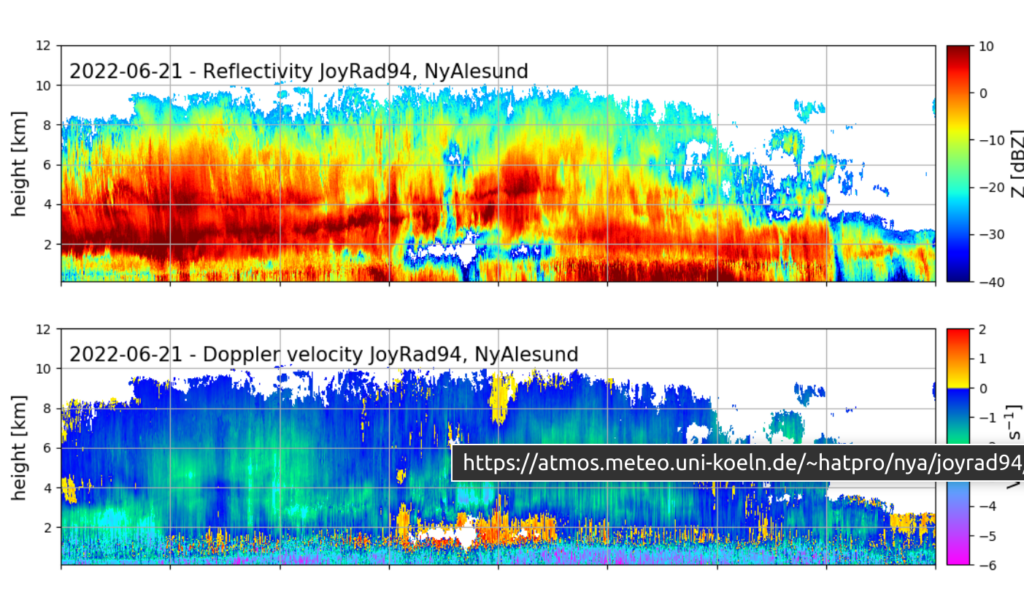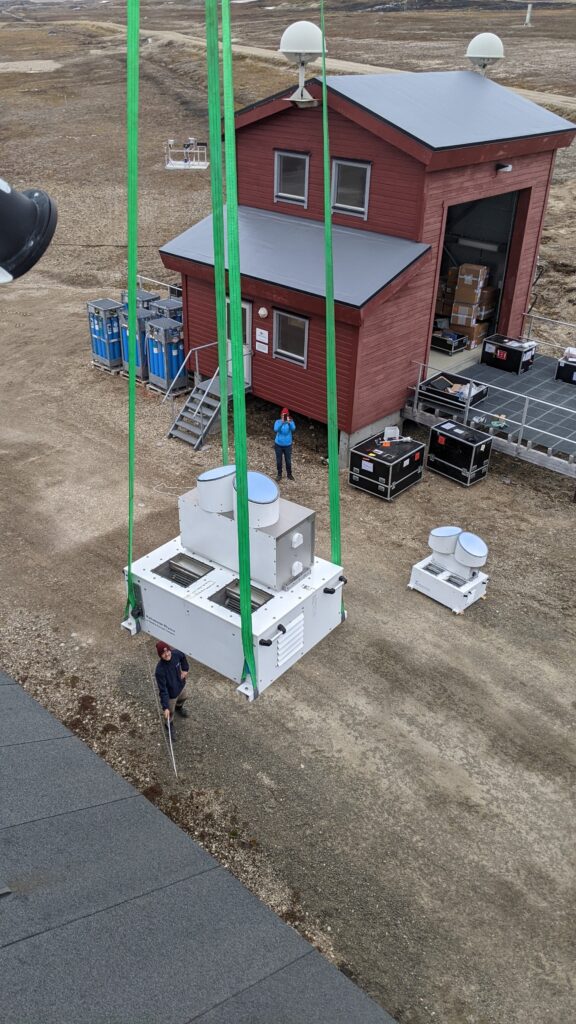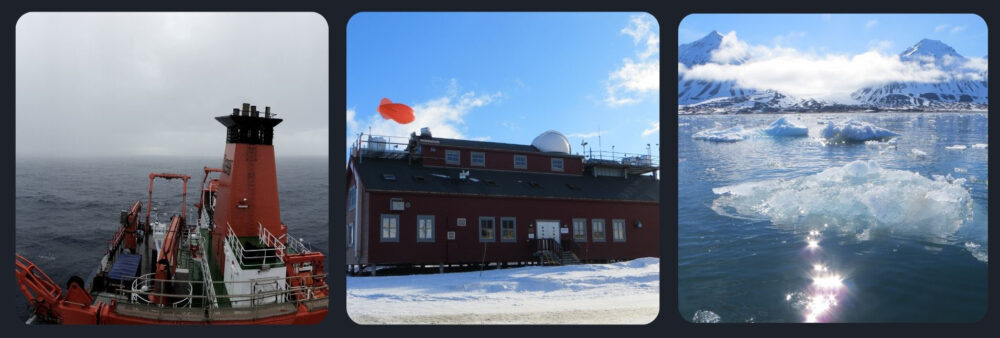written by Mario Mech
Far in the North on Svalbard at the AWIPEV research station in Ny-Ålesund, the Institute for Geophysics and Meteorology operates a set of cloud remote sensing instruments in the framework of the (AC)3 DFG program. The idea of setting up instruments that far in the North is to learn more about Arctic clouds, like their structure, lifetime, or the role they play in the dramatic change of Arctic climate.
A key instrument of the setup is a cloud radar measuring at 94 GHz. Such a cloud radar shows the vertical structure of Arctic clouds by measuring the reflected signal send upwards in different levels (radar reflectivity).

The intensity of the reflected signal depends thereby on the size, amount, and shape of cloud and precipitation particles (hydrometeors) found in the atmosphere. Easily speaking, the more red the color the thicker the cloud or the more precipitation is present. In addition to the radar reflectivity, the cloud radar can measure the vertical motion of the hydrometeors and by that where up- or downward motion is present or distinct between clouds and precipitation.

During the last three years, JOYRAD94 has done a perfect job in Svalbard. But now it is time for some maintenance at the manufacturer. Therefore it needs to be de-installed, packed and shipped back to Germany. To do that, a team from our institute has traveled to the Arctic for two weeks. Since we definitely do not want to be without cloud radar measurements, our second cloud radar MiRAC-A, usually operated onboard the Polar 5 aircraft, has been shipped up there and will take over JOYRAD94’s job.
So today a huge crane took JOYRAD94 from the roof of the AWIPEV observatory building and lifted up MiRAC-A. It can make you quite nervous to see several hundred thousand euros hanging on four ropes. But the crane driver was a genius and it all went smoothly. After a bit of screwing, drilling, fixing, and configuring, MiRAC-A was set up and continued the important job JOYRAD94 did the last years – collecting data on Arctic clouds.

